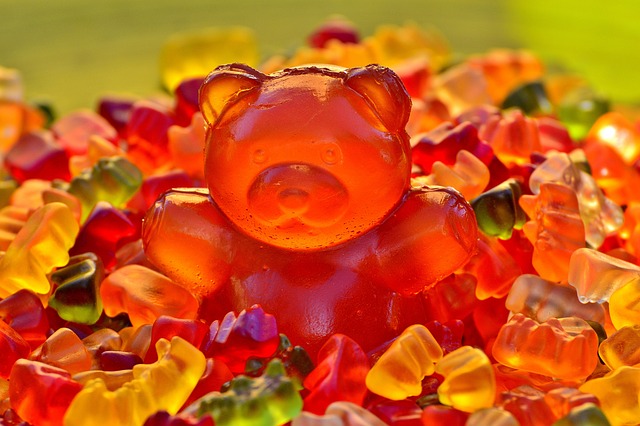Cellular Transport & Energetics Day
Topics
| Metabolism |
| Enzymes |
| Cellular Transport |
|
Tonicity & Osmoregulation
|
| Photosynthesis |
|
Cellular Respiration
|
Lab – Gummy Bear Osmosis
This needs to be done first because it takes a while to work. Here is a brief introduction but you will learn the theory in more depth later on.
Background:
- Molecules are always moving.
- DIFFUSION is the movement of molecules from an area that is highly crowded to an area that is less crowded.
- OSMOSIS is similar to DIFFUSION. OSMOSIS is the diffusion of water molecules through a selectively permeable membrane.
- Selectively permeable means some molecules can move through the membrane while others cannot.
- Cells use osmosis to move particles that it needs into and out of the cell.
Answer these questions verbally.
- What is diffusion?
- What is osmosis?
- What does selectively permeable mean?
Complete the following sections in your lab report.
Here is a guide and the lab report headings if you wish to write up the lab report.
Here is a template if you would prefer to use it.
Title: Gummy Bear Osmosis
Problem:
- How will soaking Gummy Bear candies in water affect the size of the candy?
- How will soaking Gummy Bear candies in saturated water affect the size of the candy?
- How will soaking Gummy Bear candies in supersaturated water affect the size of the candy?
Materials & Supplies:
- Three beakers / test tubes with lids.
- Three gummy bears
- ruler
- scales
- Carbonated water
- sugar
Procedure:
- Boil 1/2 cup water and dissolve sugar in it until the sugar will not dissolve anymore. This is a super-saturated solution because the heat allows more sugar to saturate the water than if it was not heated. Put it in the fridge or freezer to rapidly cool.
- Measure your gummy bear’s height and width in centimeters and record it in a data table below.
- Find your gummy bear’s mass in grams and record it in the data table.
- Draw all the details of your gummy bear in the data table. Be sure to draw it the size it really is.
- Label a beaker ‘water’ and fill it with 100ml of water.
- Label a second beaker ‘carbonated saturate’ and fill it with 100ml of carbonated water (put the lid on straight away).
- Label a third beaker ‘sugar solution’ and fill it with 100ml of the super-saturated sugar water.
- Add your gummy bears to each of the beakers and add lids.
Data Table:
Now continue with the theory Cellular Transport & Energetics on senecalearning.com.
Complete the End of Unit Test.
End of Day 1 Procedure:
- Complete the Hypothesis Section on your lab report now that you are armed with more information.
- Find your gummy bear and take the correct measurements to fill out the rest of your data table.
- Calculate the percent change in the size of the gummy bear using the formulae here.
Day 2 Procedure:
- Find your gummy bear and take the correct measurements to fill out the rest of your data table.
- Calculate the percent change in the size of the gummy bear using the formulae here.
- Complete the observations and conclusion sections of your lab report.
